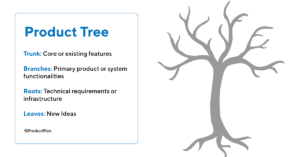What separates mankind from the rest of the animals is our usage of tools. We have tools for building things, fixing things, grooming ourselves, performing surgery, etc. Over time we’ve developed increasingly specialized tools for particular tasks. We find the same variety when we consider the multitude of prioritization frameworks. They all help organizations whittle down and rank the potential features and functionality they could add to their products. But they each take varying approaches, sometimes yielding different results.
Understanding How to Use Multiple Prioritization Frameworks
And just like we don’t grab a meat cleaver when we’re trying to filet a steak, we don’t always need to rely on the same framework every time we prioritize. But when we surveyed more than 2,500 product managers, we found that only seven percent of them use multiple prioritization frameworks. Here’s what the rest of you are missing out on.
Variety is the spice of life
Utilizing different prioritization frameworks sparks benefits, shakes things up, and gets us out of ruts. It gets people more engaged as the routine gives way to the unusual. When a team uses a framework like Google’s HEART, it can bring a more holistic view of the process.
When you’re doing the same thing over and over, it’s easy to slip into autopilot mode. Mixing up which frameworks you use activates and stimulates your mind in new ways — sparking new connections and insights that might otherwise lie dormant.
Increase Participation to Streamline Alignment
Selecting a framework that encourages/requires stakeholders to participate gets more people involved earlier in the process. Instead of presenting the results, they’re now involved earlier on. It gives them more insight into why decisions were made and deals with objections further upstream.
Prioritization frameworks such as Buy-a-Feature and Affinity Grouping are fantastic opportunities to get more folks into the process to get a glimpse of what they’re thinking and what they value. Their game-like nature gets people talking and interacting in ways that don’t often happen during a typical meeting.
With a transparent and inclusive round of prioritization, the whole organization can feel good about the hard choices being made. Getting everyone on board with the strategy sooner rather than later also makes getting buy-in on the product roadmap much easier.
Undercut implicit biases and assumptions
If you’re consistently using the same method for prioritization, over time, some bad habits can build up. They don’t all place the same weight on different things, which begins skewing the team’s vision of things.
For example, while Qualify Function Deployment is terrific at improving customer satisfaction, it is solely reliant on customer inputs. It’s not going to factor in new possibilities customers aren’t yet aware of, nor does it prioritize revenue (which might be something your investors feel more strongly about).
If you never used another framework, you might miss out on exciting new technologies or future regulatory requirements that a subject matter expert would bring to the table using DACI. Likewise, it doesn’t consider the ease or effort of each item, which RICE and ICE put front and center.
Getting over the hump
Sometimes a prioritization framework just can’t do the job you need. Its process yields too many top candidates, or maybe it’s just not providing enough certainty you’re making the right calls.
Using a second framework helps bring some clarity and break some ties. Just like college applicants aren’t judged on their transcripts and test scores alone, sometimes, you need to use a different lens that also takes their essays and extracurriculars into account.
In these deadlocked cases, it’s often helpful to use a second framework that’s a big departure from the first. If jobs to be done isn’t getting it done, benefit vs. cost weighted scoring might break the tie since it places a greater emphasis on how hard things are to implement.
There’s No Perfect Combination of Multiple Prioritization Frameworks
Swiss Army knives are popular because they can do so many different things. There’s no judgment about whether you need tweezers or toothpicks or a can opener more… they’re all along for the ride.
Having a bevy of prioritization frameworks to pick from means you don’t need to lock yourself into a single framework, or even a handful of them. They’re all available to use frequently, once in a blue moon, or not at all.
Among our 2020 survey respondents, the framework ranked highest in terms of satisfaction was the Product Tree framework. It’s visual, gamified, and inclusive. It’s also about as far away from some of the math-heavy frameworks (i.e., RICE and weighted scoring) as you can get. Yet, at the same time, the respondents used the Product Tree framework least often.
That’s probably because even though the Product Tree exercise is fun, it doesn’t seem as rigid and “scientific” as some other options. But remember, prioritization is as much an art as a science! If we could just plug everything into a computer that would spit out the optimal order of development tasks, we’d be out of a job. That’s why mixing things up can be so valuable.

Recommended pairings
While there are no rules for choosing a framework, we can recommend a few approaches to incorporate multiple prioritization frameworks into your repertoire:
- Grid-based and scoring-based frameworks work well together. Try out the 2×2 Prioritization Matrix along with the Opportunity Scoring approach.
- Subjective and quantitative frameworks provide a nice contrast. Perhaps the Cost of Delay can shed light on opportunity costs and further illuminate the output of a Kano model that’s more focused on customer delight.
- Broad strokes versus detailed analysis. Some frameworks are based on gut, others on careful research. The results of both can be eye-opening when evaluated side by side. Try comparing the effects of affinity grouping and weighted scoring to see how things stack up.
An Untapped Opportunity
Thirty-nine percent of product managers reprioritize their backlogs at least once per week, and another 32% do it monthly. Yet 70% of product managers aren’t all that happy with their current prioritization process.
Shouldn’t you be happy with something you’re doing so often? Don’t settle for a framework that leaves you cold. Don’t let the fear of a lame outcome stop you from trying something new.
Product managers are supposed to be in the business of experimentation, so treat these forays into new prioritization methods the same way. Run a post-mortem after trying different ones and see if the results satisfied everyone.
You’ll eventually find a handful of reliable frameworks you can utilize regularly. You’ll learn which ones fit best for different opportunities. Changing things up can breakthrough analysis paralysis and energize the whole team, not to mention help clarify plans when unplanned work arises.
But beware of letting these consume too much time. Some frameworks require a lot of cycles that you may not have at your disposal regularly. Maybe save those for dedicated strategy sessions and off-sites while sticking with tried-and-true efficient methods for regular rounds of prioritization.
Additionally, keep in mind that different multiple prioritization frameworks will inevitably yield varying results. Prepare to explain the decision-making process when a previously discounted feature rockets to the top of the queue (or vice versa).





